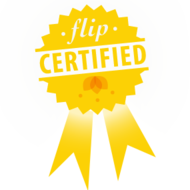I usually use this blog to share my own ideas and experiences, but this time, I'll shake it up a little and share something from someone else that is really working. In this case, I'll share a quick activity that my students tried at our recent field trip to the Academy of Natural Sciences in Philadelphia, PA.
We are just wrapping up our units on minerals and rocks, so we decided to take the kids downtown to the ANS to check out the museum and to participate in their "Geology Rocks" Discovery Lesson. This is a well-known fact to most seasoned teachers, but I will throw it out there any way - kids need some kind of task to do on a museum field trip. Well, even trips to arboretums, gardens, exhibits, just about everything. If they don't have anything to do and are not accountable for some product, they will wander around in wonderment for about 5-7 minutes, then the cell phones come out and the goofing around begins. Trust me.
Our scheduled discovery lesson was only 45 minutes and it was scheduled for 10:15, a full 45 minutes after our arrival. We decided to break our 33 students into two random groups and split them. One group would explore the first floor while the other was on the second floor, then we would attend the lesson together, then switch floors. Our kids were as good as gold with their scavenger hunts and manageable group sizes while the other school groups traveled in a boisterous chaotic mob. I am certain that our kids got more from the experience than the other groups. Again, trust me.
OK, enough with logistics, back to the rocks. During the lesson, the instructor reviewed some basic information about the three types of rock and the rock cycle, then the kids participated in a "Resource Match-Up." The instructor divided the kids into two groups. On one side of the room, the students were each given a rock sample with its name on a tag. Each student in the other group was given an everyday product, such as toothpaste or table salt, also labeled with a clue hanging on the tag.
Once he gave them the directions and released them, they had to find the person whose rock matched their object. In case the clues were not entirely clear, the tags were cut like puzzle pieces and the tags of the matching samples would fit together perfectly. The idea was to show that many everyday products that the students use everyday come from natural rock and mineral resources.
Before the lesson, the instructor had asked everyone if they had "used a rock today." Initially, only a few hands went up, but after participating in this match-up activity, he asked the question again and every hand in the room went up!
Below is a more complete list of the rock/mineral match-ups:
fluorite - toothpaste
bauxite - aluminum cans
halite - table salt
sulfur - matches
galena - fishing weights
pumice - abrasive hand soap
copper - electrical wiring/cell phone parts
quartz/sand - glass bottle
slate - chalkboard/shingle
marble - chewable antacid tablets (Tums, etc.)
Subscribe to:
Post Comments (Atom)










0 comments:
Post a Comment